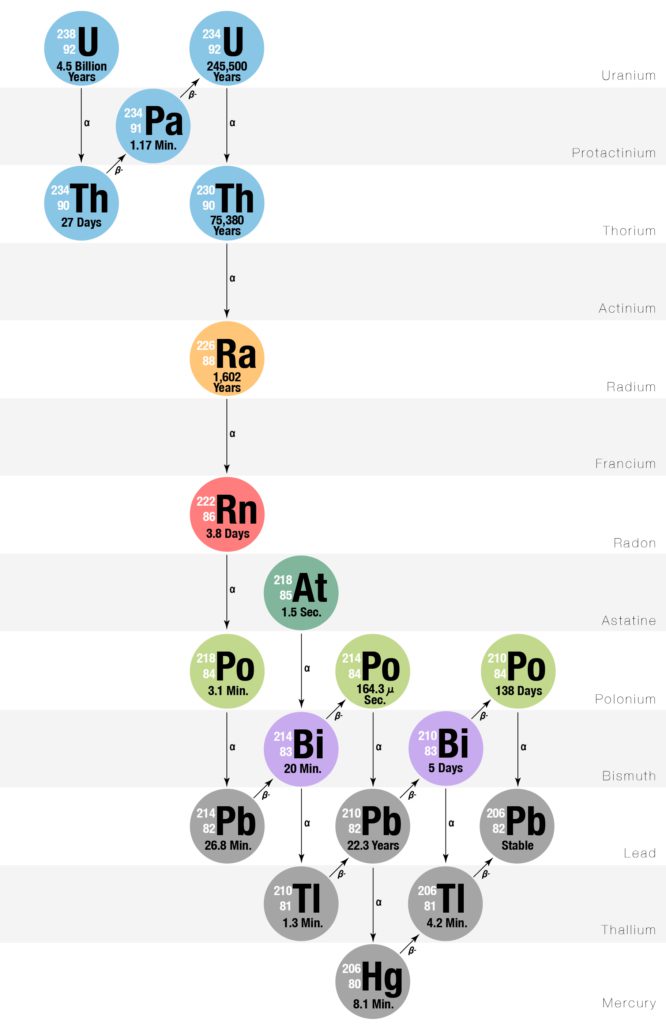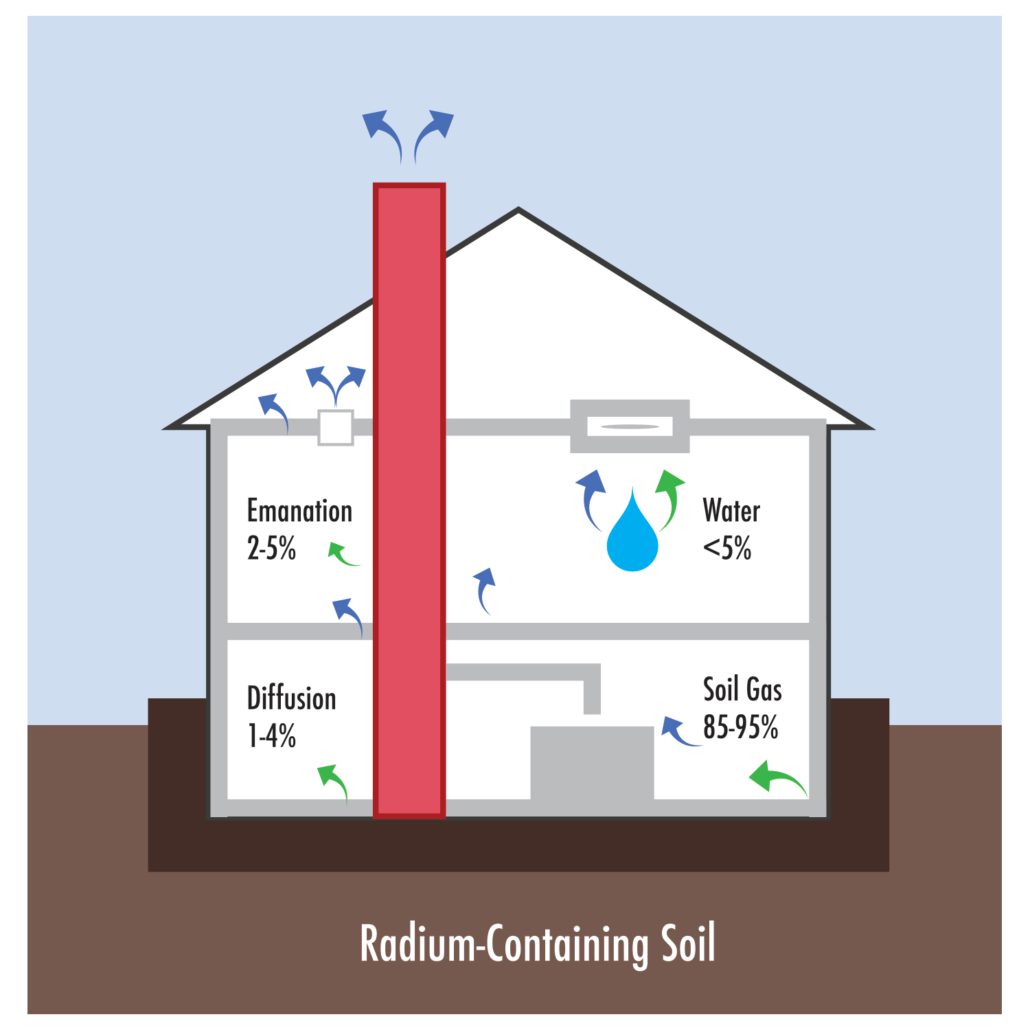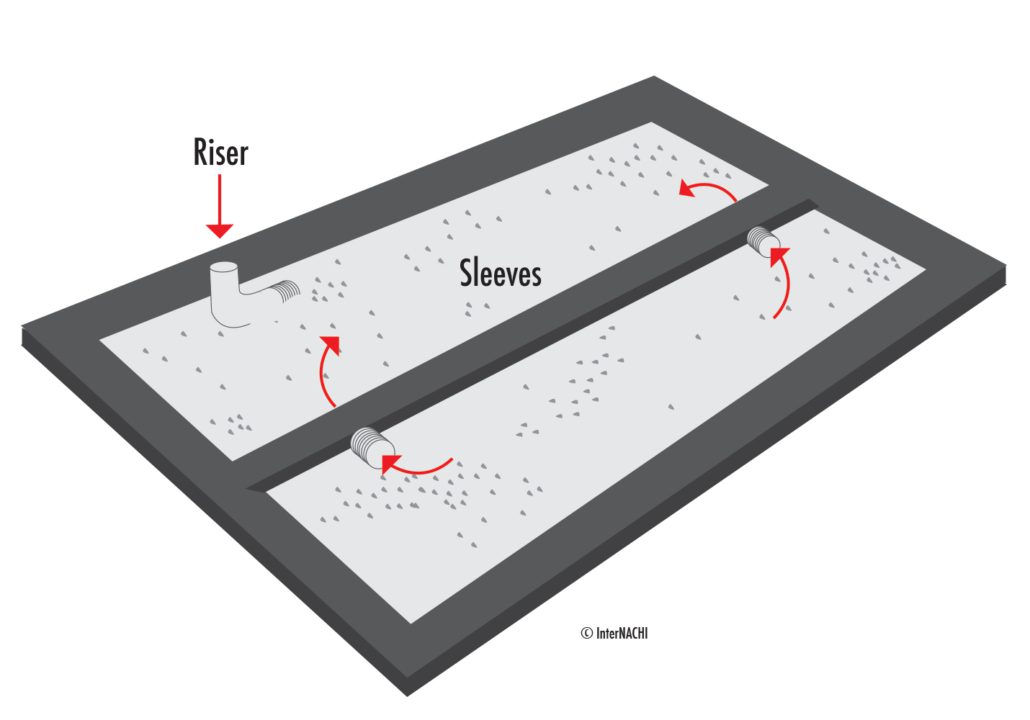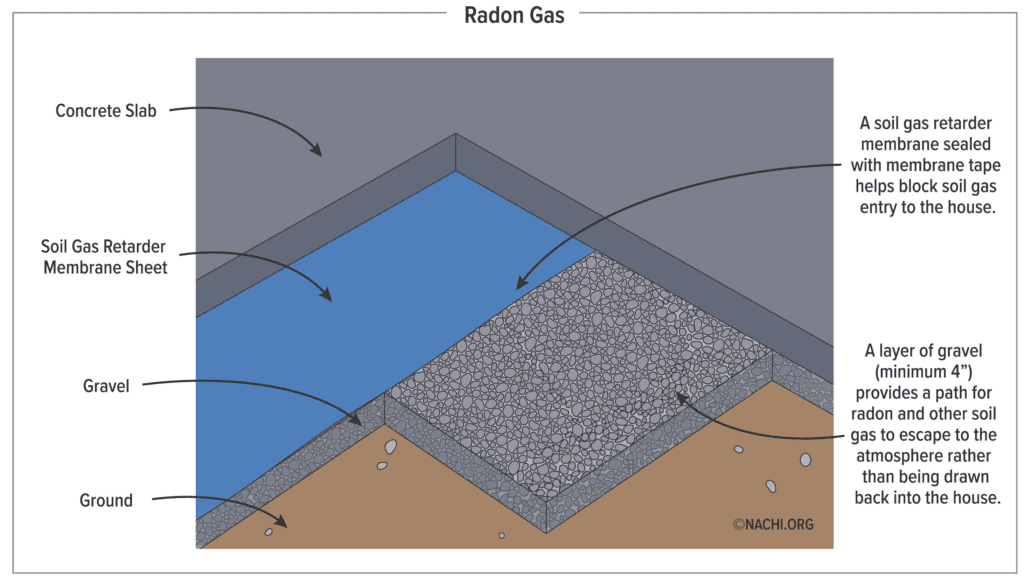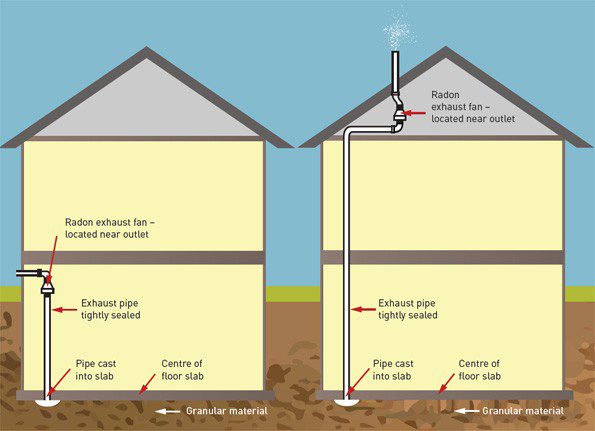What is Radon gas?
As radon education has become more prevalent in the last few years, you have probably at least heard of it. But precisely what is radon gas? If you don’t know what it is, that’s ok – that’s why we’re here! Radon is a colourless, odourless and tasteless gas caused by the breakdown of uranium in the earth’s bedrock. It’s everywhere! As this uranium decays, one of the steps to becoming a stable element is to become radon gas. Usually, this gas stays down there or filters up through the soil, dissipating into the outside air harmlessly as it decays into polonium and, eventually, stable lead.
Why do I care?
Houses these days are built exceptionally tightly. A home’s tightness is a significant factor in its energy efficiency. So newer homes (and upgraded older homes) don’t breathe freely with the outside air. Tight homes usually have lower air pressure than the surrounding soil. Other situations can create negative pressure in the house, too. For example, when the bath fan or range hood fan runs without means to balance the air pressure. When the house has negative pressure like that, it becomes an excellent vacuum and will pull in air from wherever it can. That includes cracks in the basement slab, poorly sealed sump pits, and poorly sealed floor drains.
As you now know, the gases underneath the house can contain radon gas. So that means the gases that the house is pulling in (into the basement mostly) may have this radon gas, which you also now know is radioactive. It can accumulate to very high and dangerous levels in homes. Breathing in this radon gas is a leading cause of lung cancer. It is the second leading cause of lung cancer, only behind smoking. Or, to put it another way, if you want to feel a trifle more alarmed, it is the leading cause of cancer in non-smokers.
Besides letting radon gas into your home, basement foundation cracks can allow water to seep in. The Importance of Proper Grading Around Your House: Protecting Your Foundation, Preventing Erosion, Improving Curb Appeal, and Saving Money
What can I do about high radon levels?
Administer a radon test.
You can test for radon! The best test to do is a simple self-administered long-term test. You can easily find one at your favourite home improvement store or online retailer. Follow the directions and let it sit for 90 days to one year. If you’re doing the test over the winter months, when doors and windows are typically closed, you can do a shorter 90-day test. But the longer you run the test, the better, up to one year. Ensure you follow the directions very carefully for the test to remain valid.
Several types of long-term radon tests can be used to measure the radon concentration in a building over an extended period. The two most common and most accessible for consumer use are:
- Alpha Track Detectors: These use small, special plastic or film to detect radon. The plastic is placed inside a container with a small defined opening. At the end of the test period, the container is sealed and returned to a laboratory for analysis.
- Continuous Radon Monitors (CRMs) continuously measure radon concentration over time, providing real-time data. They are commonly used to detect changes in radon levels quickly but are also more expensive and require specialized maintenance.
Interpret your radon test results.
When the monitoring is complete and the test results known, you will have an average radon level measured in Becquerels (Bq). Health Canada recommends installing a radon mitigation system if the results exceed 200 Bq; however, the World Health Organization recommends radon mitigation above 100 Bq.
Mitigate radon if necessary.
The good news is that, since 2014, the Province of Alberta has required builders to build houses so that radon gas has a tough time entering through the basement slab. These requirements include installing a plastic sheet under the concrete, ensuring drain lines are sealed to the floor drain, and installing tightly sealing lids on sump pits. However, doing all that doesn’t guarantee that gasses from under the slab aren’t still getting sucked into your house. That is why they are now required to install a rough-in for a radon mitigation system. This rough-in includes a perforated pipe under the slab, running to somewhere near the middle of the house. This pipe then stubs up into the basement.
Suppose your test results indicate that you have dangerously elevated radon levels. In that case, this rough-in makes installing a mitigation system very simple, much less expensive and invasive than if there was no existing rough-in.
If a radon mitigation system installer uses an existing rough-in, they connect an in-line fan to the stub-up and vent it to the exterior. This type of mitigation system is called “sub-slab depressurization.” It is the most common and effective means of reducing the radon levels in a home. If no rough-in is present, other effective methods include coring a hole through the basement concrete floor slab or connecting to the weeping tile system through the sump pit.
Should I get a short-term Radon test if I’m buying a house? Ninety days to 1 year is too long!
In short: Probably not. For a longer answer: A short-term test sounds like an excellent idea when buying a house. After all, if there are high radon levels, you could get the seller to pay for it! Don’t get too excited. According to a University of Calgary study, short-term tests are 99% inaccurate. There’s just too much fluctuation in radon levels from day to day to be able to rely on a short-term test. Health Canada says you should never use a short-term test to determine if you need to mitigate. And if you do use it to give you a “good idea” of your radon levels (which it won’t), always follow up with a long-term test.
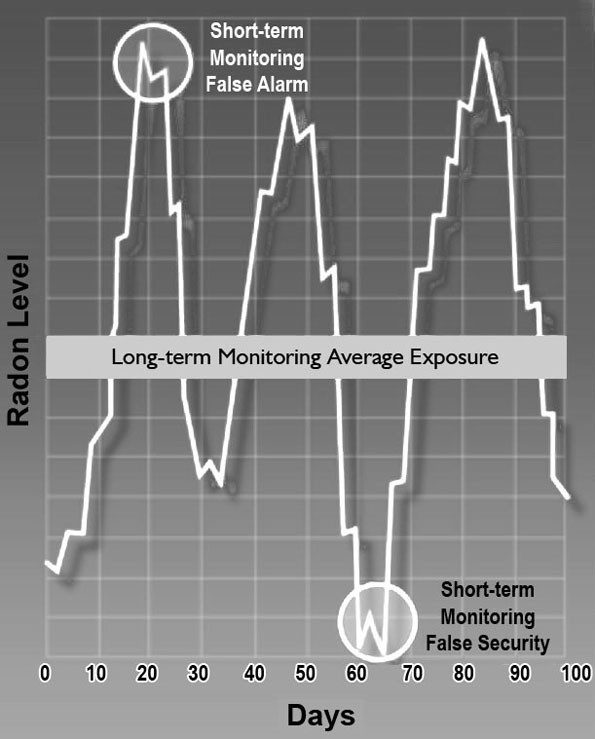
Understanding radon testing: Short-term tests can yield both false positive and false negative results.
Conclusion
While radon gas is prevalent throughout North America, it is inexpensive to test for and easy to mitigate. While short-term tests don’t give accurate results, long-term tests do. Get a DIY long-term kit or device, or call a radon mitigation specialist. Often, radon mitigation specialists will perform a test free of charge, making their money when a radon mitigation system needs to be installed. Testing for radon regularly every three years will make one less thing you have to worry about for your and your family’s health.
Disclaimer: This article does not cover all of the hazards of radon and the possibility of mitigation. In no way is this article meant to be extensive or all-encompassing. See the Government of Canada Radon Reduction Guide for Canadians for more information.
You can see live radon test data at Radonmap.com. This map can show you how prevalent high radon levels are in homes in your area.

